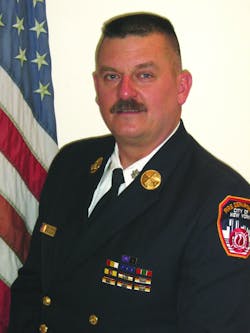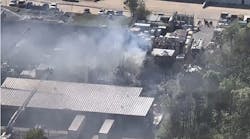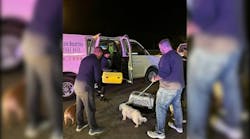When was your most recent working structural fire? If you are like me, you probably remember just about everything you saw and did while at a structural fire. Whether it was a fire involving a house, a commercial building or an old, vacant apartment building, you have a “video” on file in your head that can be used to review and revisit this event.
I mention this because I was recently at a multiple-alarm fire where I live in Orange County, NY. The fire was in Washingtonville, the village where we shop, where our kids go to school and where we mail our letters. The Washingtonville Fire Department handled this fire, in a multi-story/multi-use structure, quite well. I was watching the action unfold when I noticed one particular officer moving around quickly and talking and directing various firefighters. He did not stay in one spot, but instead he just kept moving and talking and directing. Do you know who he was?
Yes, he was the safety officer. I know we all try and use the Incident Command System (ICS) to the best of our ability, and fill in all the blanks and assign all the positions, but you really need to have a safety officer at every working fire. Let’s take a look at exactly what a good, trained safety officer has to offer.
You noticed I said trained, didn’t you? Numerous safety officer programs and training classes are available. You can’t just select your brother-in-law at the next fire and make him the safety officer. What you want to do is have several people in your company or department who can be trained to perform the job properly and, yes, safely. Large urban departments often have assigned safety officers and smaller career departments often have personnel who do double duty as training and safety officers. Volunteer departments should also take this position seriously and make the effort to select and train personnel for this important job.
What exactly does a safety officer do at a structural fire? In a word, the safety officer keeps both eyes on the safety of the operating firefighters so the chief or incident commander, who is still responsible for safety, can pay attention to running the fire. Yes, every officer must keep safety high on his or her list of priorities, but the safety officer is the full-time, safety-only officer on the fireground. If you had to make a list of safety concerns at structural fires, and how the safety officer impacted those concerns, it may look like this:
1. Make sure all firefighters are wearing all of their personal protective equipment (PPE). Nobody is exempt from wearing PPE, even though some firefighters think they are. Every firefighter must wear every piece of PPE, including a hood, gloves, bunker gear, helmet and self-contained breathing apparatus (SCBA).
2. Make sure no firefighters are operating in a collapse zone. There is not a collapse zone at every fire, but based on the condition of the building and the location and extent of the fire, the safety officer must visit and revisit this issue. I have pulled firefighters off of a sidewalk and away from a damaged burning building, only to find them right back in the exact same spot five minutes later. Firefighters are aggressive (that’s good!) and always want to fight fire and save lives. That’s why we have safety officers – to remind them of dangerous conditions and keep them safe.
3. Monitor roofs and exposures. I can’t tell you how many multiple-alarm fires I have operated at where some of the most dangerous and hazardous conditions were on the roof or in adjacent exposures. Once again, the safety officer is not assigned to a specific spot or location, so he or she can travel around the scene and monitor conditions everywhere. At top-floor fires we almost always have firefighters on the roof attempting to perform vertical ventilation. Whether they are opening bulkheads, venting skylights or cutting the roof itself, there is a degree of danger that must be monitored. If the roof looks like it is getting soft or spongy or beginning to sag, a safety officer may notice that before the firefighters who are working with saws and tools will.
4. Master-stream use. Once master streams are employed at a structural fire, two things are almost certain – the building is lost and the degree of danger around the perimeter of the building rises dramatically. Master streams can knock down walls and sent bricks and debris flying hundreds of feet. Firefighters must be kept out of these hazard areas while the streams are in use.
These are just a few of the many reasons a safety officer is not a luxury, but a mandatory part of the incident command team at structural fires.
Chief Salka takes a candid look at news and events impacting the fire service in his blog “The Fire Scene” at http://www.firehouse.com/blogs/the-fire-scene.






